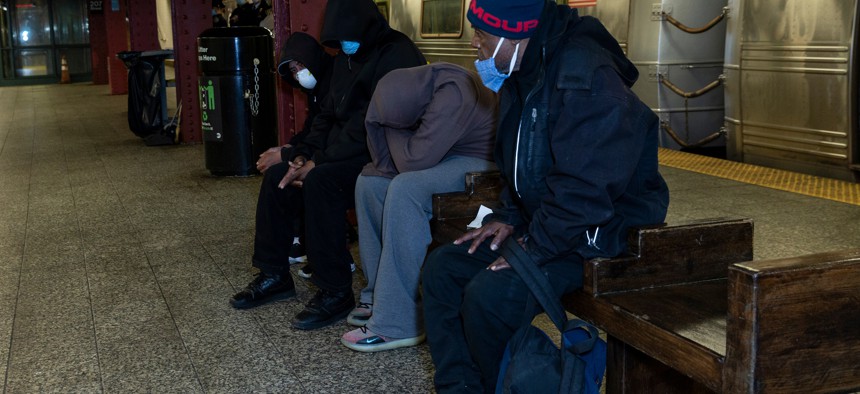Report: homeless New Yorkers in shelters have higher COVID-19 mortality rate

Men with face masks sit in New York City subway station. lev radin / Shutterstock
According to a new report from the Coalition for the Homeless, the coronavirus mortality rate for homeless people living in shelters in New York City is higher than that of city residents in general.
The mortality rate for shelter residents was 321 deaths per 100,000 people while the overall rate for New York City was 200 deaths per 100,000 people. Outcomes were even worse for people staying in dorm-like congregate shelters, which are usually for single adults.
Health experts have warned about the risks homeless people face during the pandemic. Those challenges are particularly apparent for unsheltered homeless people, who often can’t access showers and bathrooms regularly. But even in shelters, staying in close proximity to other residents and to staff – especially if personal protective equipment such as masks and gloves are in short supply – presents other risks.
By the end of May, there were 926 confirmed positive COVID-19 cases in about 179 shelter locations across the city, according to the report.
The nonprofit concluded the report by reiterating calls to offer private, single-occupancy hotel rooms to all homeless New Yorkers in order to promote isolation. Advocates for the homeless have pushed for this since the start of the health crisis, but the effort came to a head after government officials decided to shut down overnight subway service, in part to redirect more homeless people off trains and into shelters. During the first four days of subway closures in early May, however, only about 24% of the 824 people who accepted referrals to shelters actually ended up staying in one.